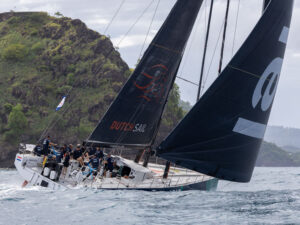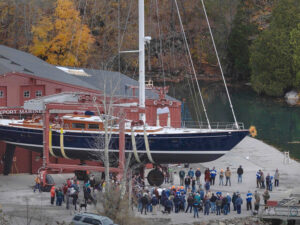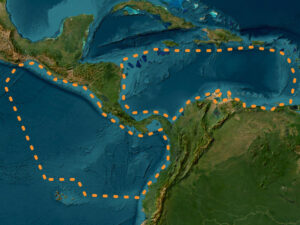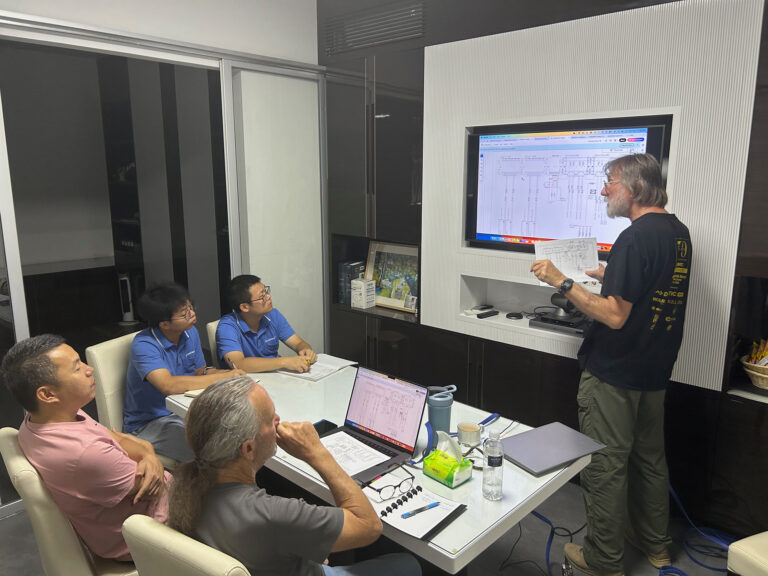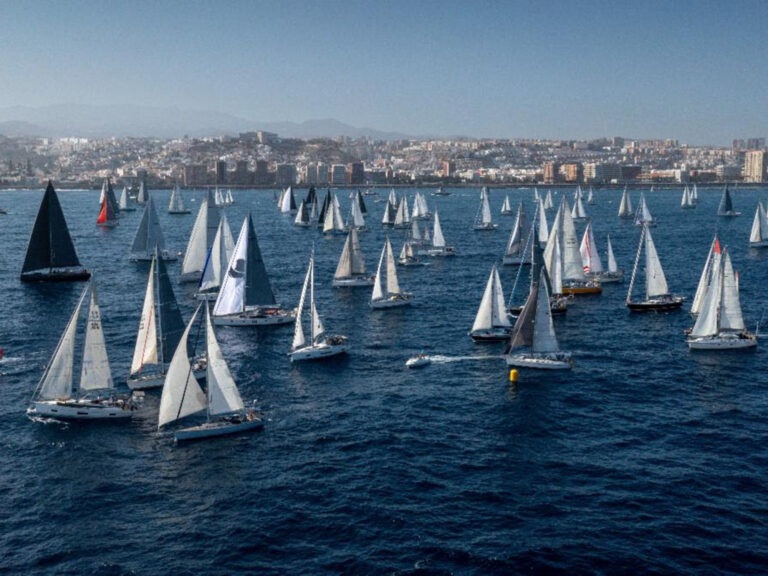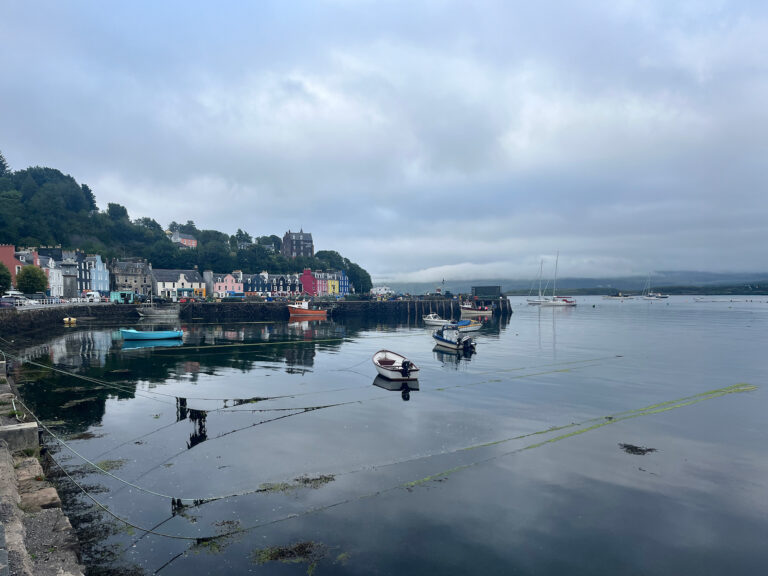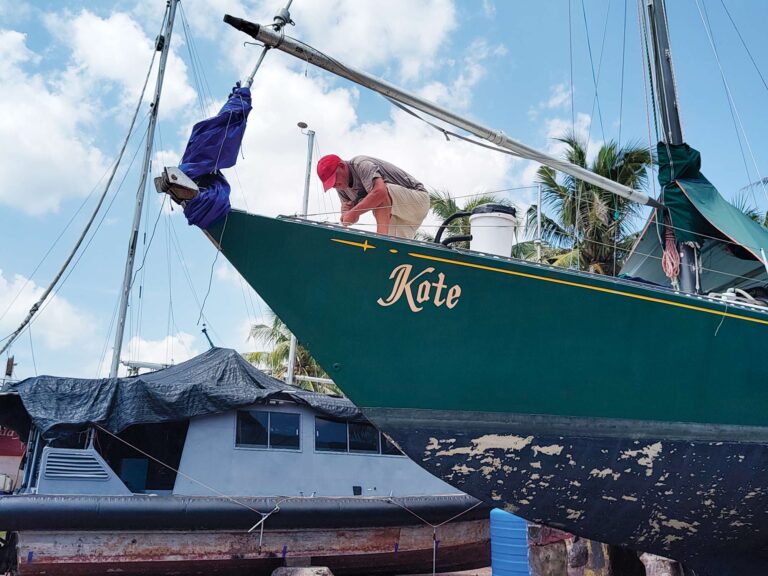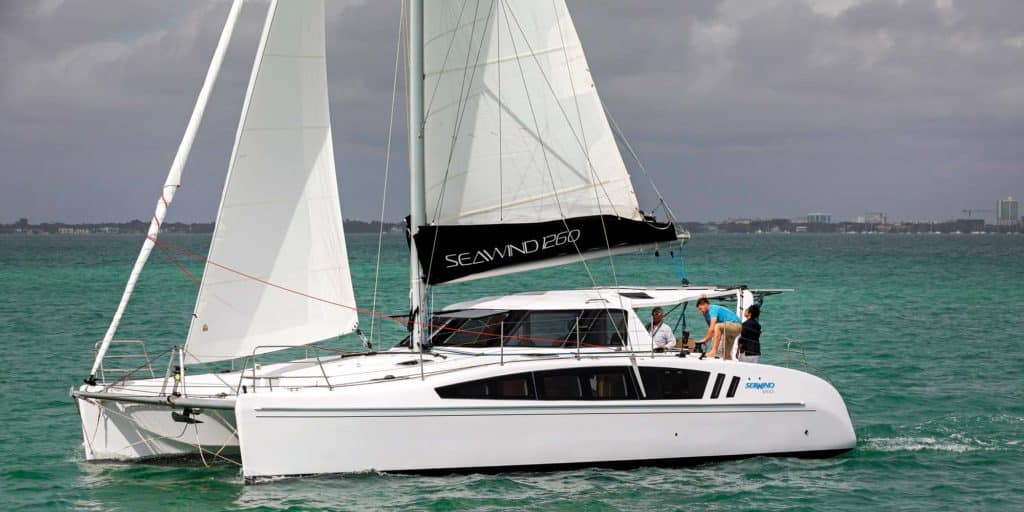
If Goldilocks were in the market for a cruising catamaran, I’d advise her to check out the new Seawind 1260. At 41 feet length overall, it’s big enough for a couple with kids or occasional friends aboard, small enough to be easily handled and maintained by a shorthanded crew — and it can sail, which to my mind makes it “just right,” as the storybook gal is known to say.
On a boisterous morning last winter after the Miami International Boat Show, I jumped aboard for a short sea trial on Biscayne Bay, just before the boat was due to cross the Gulf Stream to winter over in the Bahamas. In the protected waters of the bay, a northeast wind gusted to 20 and higher and sent the Seawind surging ahead with every puff. These were fine conditions for a test sail, but a lousy prospect for crossing the stream, although I learned later that the boat fared just fine.
With the full main hoisted and the self-tacking jib unfurled, we had no trouble pushing the speedo past 8 knots closehauled while the breeze was up. Later, with the wind down to about 14 knots, the speedo still hovered at a little better than 8 on a broad reach back toward the barn. Better than the speed, though, was the feel of the wheel as the boat sliced through the water. Sports car were the words that came to mind as I jotted down notes so I’d recall the feedback that came from the helm.
Seawind builds its catamarans in Vietnam, along with Corsair trimarans, a brand it also owns. The Seawind range includes the 38-foot 1160, the 1190 Sport (a 39-footer) and the 1600, a Reichel/Pugh-designed 52-footer that is its flagship.
The 1260, outfitted as the boat we sailed was, carries a price tag of $525,000, delivered to the United States with optional 39 hp Yanmar diesels (29 hp is standard). The boat shares many of the same attributes as its smaller siblings, notably a trifold hinged saloon door that lifts and is stored on the underside of the Bimini for true indoor/outdoor living; twin wheels affixed to the main bulkhead to either side of the door, just behind electric windows that lower to further open up the interior; large glass ports at the front of the saloon that open to provide excellent ventilation throughout the boat; and a galley-down design (more on that in a moment), which is somewhat of a rarity on cats these days.
Nearly all the structural parts of the 1260 are foam cored. Hulls are infused with vinylester-modified epoxy resin. Elsewhere, polyester resin is used in the deck, Bimini (made in a two-sided mold so both sides are finished), bulkheads, and interior cabin and furniture modules. Compared to earlier models, Seawind has removed as much wood as possible, and now it tabs in items such as shelving in hull lockers to increase the overall stiffness of the boat.
A hallmark of earlier Seawinds was a large stainless barbecue grill integrated into the railing and seat across the back of the cockpit. That has been replaced on the 1260 by a couch across the transom. On its port side, a grill has been located in a covered locker; to starboard, there’s a sink in a similar space.
At either helm, windows have been installed overhead in the Bimini, which is particularly appreciated when hoisting sail to avoid snarling the main’s full battens in the lazy jacks. Underway, the person steering can sit and be protected from wind, rain and sun while still having a 360-degree view, or can perch atop the hull with one hand on the wheel and enjoy the breeze and a clear view of the telltales.
Indoors, a U-shaped couch wraps around the front of the saloon and surrounds a transformerlike table that’s mounted on a gas shock so it can be easily raised for dining, lowered and turned sideways for entertaining, or dropped farther still to make a large berth.
The sides of the saloon slope outward, so the space above the hulls is open amidships. This benefits the galley, located in the center of the starboard hull. The cook has room to work but remains a member of the party; food can easily be passed up, or after-meal clutter down. The standard galley comes with a stand-up fridge and 180-liter top-loading freezer on the inboard composite counter, and a double sink and stove-top outboard (an oven is optional). Standing at the sink, the view out of the large port in the hull is spectacular.
There’s a guest cabin with a queen-size berth and head and shower compartment forward of the galley. Aft, there’s a smaller cabin with a double bunk. Access to the port engine is beneath it. If I were the owner, I’d seriously consider using this space as a workshop/catch-all area because I found storage overall to be at a bit of a premium.
The owners have the port hull to themselves. A large head and shower compartment are located aft, with access to the starboard engine through a door in the shower’s wall. An electrical panel and storage locker are amidships. Forward, there’s another great view through a hull port located at the foot of the athwartship queen bed.
With performance that’s usually expected only in the realm of cats with daggerboards, comfortable living accommodations and fine finishing touches like triple lifelines on deck, the 1260 is the result of a number of good compromises.
And, it can sail.
Mark Pillsbury is CW’s editor.

